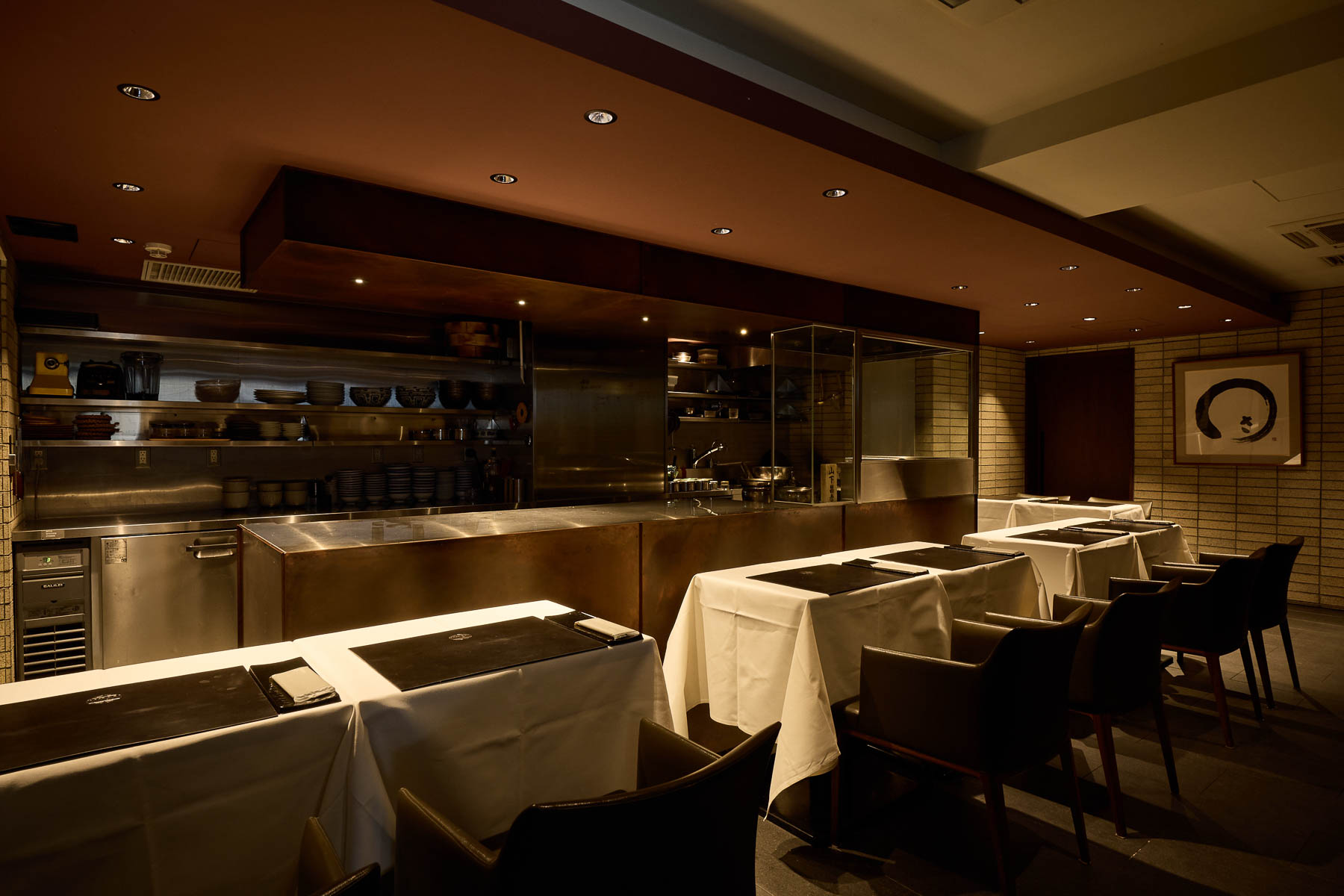
Tokyo
Wasa
わさ
Chinese cuisine meets contemporary artistry. From fried dumplings to dan dan noodles, Wasa reimagines classic Chinese dishes with a modern touch. Relocating from Roppongi Hills to a new space in Ebisu, Chef Masataka Yamashita continues to refine his eloquent menu using only the highest quality ingredients. Every dish is a product of his pursuit for perfection.
Wasa’s new location is just a short walk from Ebisu Station along the Meiji Dori boulevard. With no signage outside, the restaurant remains a well-kept secret, reserved only for guests with reservations. Inside, just a few tables encircle the open kitchen, where Yamashita personally presents each dish. He typically serves only two groups per seating, ensuring every guest receives his full attention.
The restaurant’s ambiance is beautiful and refined, filled with details of traditional craftsmanship. At the entrance hangs a rare sketch by Touichi Kato, the renowned painter of the Shoin sliding screen of Kyoto’s Kinkaku-ji Temple—who also happens to be Yamashita’s grandfather.
Behind Wasa’s continued success is the support of the chef’s wife, whose maiden name the restaurant bears. Since opening more than a decade ago, she has been the first to taste every menu, offering perceptive critique with her refined palate. Together, they create a dining experience that feels deeply personal.
“You only live once,” he often says—a mantra that fuels his culinary pursuit. The result is a remarkable modern dining experience that lingers in the heart of his guests.
CUISINE
Chinese cuisine meets contemporary aesthetics
Yamashita’s cooking is rooted in the pursuit of perfection. Many of his signature recipes, like karasumi rice noodles, are inspired by the teachings of Hitoshi Furuta—his mentor and head chef of Kaikatei, a famous restaurant serving original Chinese cuisine in Gifu City.
“Umami comes from work while flavor comes from subtraction,” Yamashita repeats his teacher’s words. “I will do whatever it takes, and however long it takes, to create the best tasting food. These words have become my core philosophy.”
The 10-course omakase menu is a procession of Chinese classics such as rice noodles, corn soup, crispy crab spring rolls and mapo tofu. But under Yamashita’s meticulous hand, these familiar recipes reveal new dimensions.
“My dan dan noodles are all about balance,” Yamashita explains. “First, sip the soup on its own. Then, take a few strands of noodles at a time to gradually catch pieces of miso-flavored meat. That way, the flavors build like a crescendo.”
The seemingly extensive meal feels light on the palate as the chef pays attention to how the meal flows. Dishes arrive when the guest is ready, sometimes overlapping to allow the flavors to mingle naturally. Some are served with a variety of condiments, allowing each guest to tailor the experience to their liking.
Even the simplest condiments, like zha cai, or pickled mustard stem, are elevated into remarkable dishes. Infused with sesame oil and scallions, the pickles are crisp and deeply savory. Japanese long onions, which are used throughout the meal, are rested for a few days, allowing their flavor to deepen.
Another guest favorite is the fried dumplings, which Yamashita calls “Chinese-style ravioli.” The dumplings are cooked al dente for texture, and fried in hot oil until crisp and golden.
INGREDIENTS
Sourcing the finest ingredients is second nature to Yamashita. He selects the finest cut of pork from brands such as Kagoshima kurobuta, Aino and Meishan, while seasonal vegetables come from across Japan—garlic from Aomori, garlic chives from Ibaraki and ginger from Shimane.
The dumpling wrappers are custom-made by Yahata Seimenjo, a local noodle maker. Using ultra-thin sheets of dough, the chef hand-cuts each wrapper into precise 2.95-inch circles. He is committed to perfecting every detail.


CHEF
Masataka Yamashita
DRINKS
Yamashita has found a talented sommelier to manage Wasa’s drink selection, which needs to be diverse enough to complement both the strong and soft flavors of Chinese cuisine. Whether it’s wine or sake, every glass is of quality, just like every dish. The wine list stocks many French and Italian bottles, while the sake brands include some rare finds from small breweries.
Course
- The price includes our booking fee of ¥8,000
- The price includes our booking fee of ¥8,000










